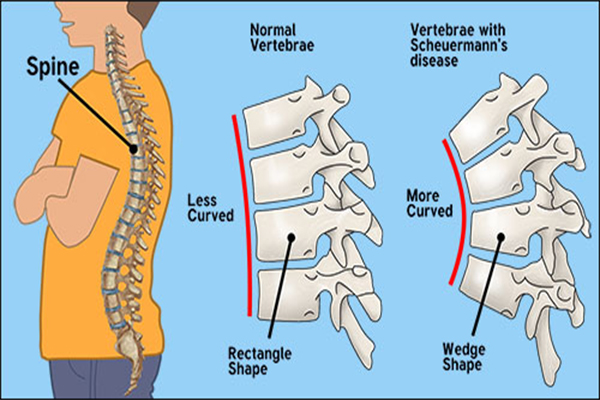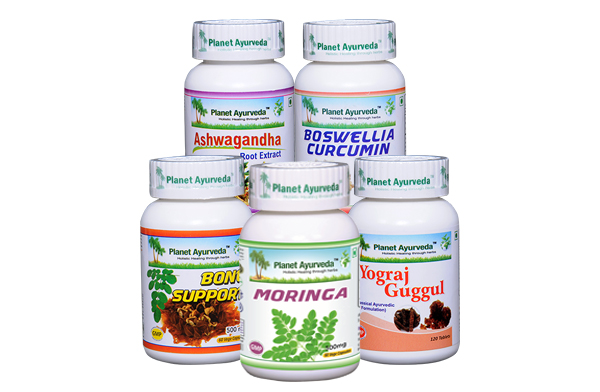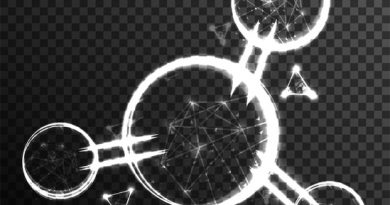Herbal Remedies for Scheuermann’s Disease
Abstract
Scheuermann’s disease is a self limiting skeletal condition of childhood. This is also called juvenile kyphosis or scheuermann’s kyphosis. This condition can be defined as the uneven growth of vertebrae with respect to the sagittal plane. In this case the posterior angle of the sagittal plane is greater than the anterior angle of the sagittal plane. Due to this the wedging shape which is formed is called as kyphosis. Usually 3-4 adjacent vertebral disc of thoracic spine are involved which experience anterior wedging greater than or equal to five degrees. Involvement of thoracolumbar or exclusively lumber can also be noticed.
Introduction
The name ‘Scheuermann’s’ is given after a Danish surgeon Holger Scheuermann’s. The spine of an adult is in ‘S’ shape. Cervical and lumbar vertebrae are concave that is lordosis and thoracic and sacral regions are convex that is kyphosis. The kyphosis of the thoracic spine varies from 20-40 degrees. Spinal deformities are marked when this curve is greater than or lesser than the mentioned degrees. Scheuermann’s disease is mostly noticed in adolescents ageing between 12-17 years. Males are more affected than females. Commonly a hunchbacked named deformity is noticed. The condition is usually painless, pain only aggravates by exercising and relieves on rest. This condition is related to diseases caused by vitiated vata or can be understood as the symptom of vitiated vata.
Causes
Ayurveda mentions following etiological factors for vata vitiation which contributes in the origin of this disorder 
Ref:(Charaka Chikitsa sthana 28/18)
- रुक्ष शीत अल्प लघ्व् अन्न व्यवाय अत्ति प्रजागरेः Consumption of dry cold or light food, indulging in excessive sexual activities.
- विषमा उपचार दोषा सृकुस्त्र वणादाति: Wrong therapeutic management, excessive elimination of rakta dhatu leads to vata dosha prakopa
- दुख शय्या सनात: Sitting and lying on an uncomfortable chair or bed.
- क्रोध दिवसवप्न अभदय: vata vitiation due to anger issues, sleeping a lot in day time and fear.
- वेग संधारण आम अभिघात अभोज्नात: Suppressing urges, production of ama dosha (undigested food), injury especially to vital parts and fasting are also the contributing factors in vata vitiation
- देह स्त्रोतन्सि रक्तानि पूर्यत्वा अनिलो बली
- करोति विविधान वयधीन सर्वाङ्ग अङ्ग संश्रितं
Above mentioned reasons contribute in vayu prakopa and start stuffing into vacant Micro channels (strotas) in the body (deha) producing various diseases. Such diseases can pertain to either one part or covers the entire body.
Some reasons as explained by modern science
- The condition can be understood as the result of hereditary components.
- Lifting heavy weight or manual heavy labour before the fusion of epiphyseal fusion.
- Some theories claim endocrine system involvement.
Types
- Type 1: Involvement of thoracic spine only with apex of curve T7 to T9.
- Type 2: Involvement of thoracic and lumbar involvement, with the apex of curve T10 to T12.
Clinical Presentation (Sign & Symptoms)
- The disorder is characterized by involvement of three or more adjacent vertebrae which are together wedged equal to or more than five degrees.
- There will be no sign of any kind of childhood injury or any kind of traumatic disorder.
- Hump shaped back or round back will be seen.
- Patients can present with pain which worsens with activity.
- On physical examination a rigid hyperkyphotic curve (abnormal curve of spine presented with excessive forward bending condition) is noticed with forward bending.
- This hyperkyphotic curve will not resolve while lying (either prone or supine), justifying the rigid character of the deformity.
- The body will try to compensate for hyperkyphosis with lumbar or cervical hyperlordosis.
- Stiff muscles especially hamstrings, easy tiredness will be noticed.
- In extreme cases impaired heart and lung functions can appear.
- Patients will show disinterest in sports or other physical exercise, work and in performing daily activities due to the negative effects of hyperkyphosis cosmetically.
- Associated conditions involve large lung capacities and males have large barrel shaped chest. This is very often understood as the body’s natural way to compensate for the breathing depth.
- Ayurveda acharya has mentioned kyphosis as a symptom in vata vitiated vayadhi.

खञ्ज पङ्गु कुबज्तवुम् : Here “Kubajtavam” can be understood as kyphosis.
Diagnosis
An x-ray will help in determining degree of kyphosis which can be determined by measuring cobb’s angle (measurement of the degree of side to side spinal curvature) and sagittal plane (longitudinal plane dividing body into right and left).
Treatment
Modern Perspective:
- Conservative treatment includes medications, physical therapies and use of back braces. This can help in either reversing or stops the kyphosis before reaching its full severity. In Germany a standard treatment for Scheuermann’s kyphosis is schroth method. The purpose for this exercise is to de-rotate, elongate and stabilize the spine in a three dimensional plane.
- Surgery
Ayurvedic mode of Treatment:
Our classics describe three type of treatment in this condition:
- Shodhan chikitsa : This includes snehna karma (external and internal both), swedan karma (sudation therapy) and Basti karma (administrating medicated decoction through anal route) .
- Shaman chikitsa: This is done by using classical formulations internally like yograj guggul, amritaadi guggul etc.
- Lifestyle modifications: Modern science’s schroth methods can be understood under yoga asanas.
For the better management of this condition in early stages Planet Ayurveda also offers its following products:
Product Description
1. Bone Support
Bone Support capsules are especially made to increase bone strength. The capsules are manufactured from the standardized extract of, asthi shrinkhala (Cissus quadrangularis), Shudh Laksha (Laccifer lacca), Sahijan (Moringa oleifera) etc. The ingredient asthi shrinkhala is very famous for its anti-inflammatory effects. It also pacifies vata dosha and reduces pain and is one of the best medicines for this disorder.
Dosage: Two Capsules twice a day with lukewarm water
2. Yograj Guggul
It is one of the most effective classical formulas used in management of this condition. This contains shuddha guggulu, dried ginger (adrak, Zingiber officinale), pipali (Piper longum) fruits and roots, chavya (Piper cubeba), chitrak (Plumbago zeylanica) etc. It reduces muscle spasm or rigidity, stiffness in vertebrae due to hyperkyphosis in Scheuermann’s disease. It also removes toxins from the body which are generally formed due to ama formation, improves digestion. The blended herbs in this formulation work along with guggul and removes excessive vata from joints.
Dosage: Two tablets twice a day after meals with plain water.
3. Boswellia Curcumin
Boswellia capsules are made from the standardized extract of Shallaki (Boswellia serrata) and haridra (Curcuma longa) The shells of these capsules are 100% organic and vegetarian. Haridra consists of a compound called curcumine which is best known for its anti-inflammatory properties.
Dosage: One capsule twice daily after meals with plain water. .
4. Ashwagandha Capsules
Ashwagandha (Withania somnifera) is very well known for its real potent rejuvenative property. It has very impressive pharmacological effects on conditions related to bones and in inflammatory disorders. In this disease, Ashwagandha Capsules provide strength to the body and also nourishes the body.
Dosage: One capsule twice a day after meals with plain water or milk.
5. Moringa Capsules
Moringa oleifera plant is often called a drumstick tree. This plant is having anti-inflammatory, wound healing, analgesic and detoxifying properties. Thus, help in this condition by these properties.
Dosage: One capsule twice a day after meals with plain water.
Contact Planet Ayurveda to provide you the costing / ordering and delivery information at – costing.planetayurveda@gmail.com or call at +91-172-5214030 Or Check Website – www.PlanetAyurveda.com
Conclusion
Disorders like Scheuermann’s disease affect mental health very badly. People suffering from such conditions usually lack confidence and enthusiasm. To help such people Planet Ayurveda manufacturing unit is working in production of totally herbal formulations. Our products have no side effects and there are no additives present. For any query feel free to contact or visit www.planetayurveda.com .







